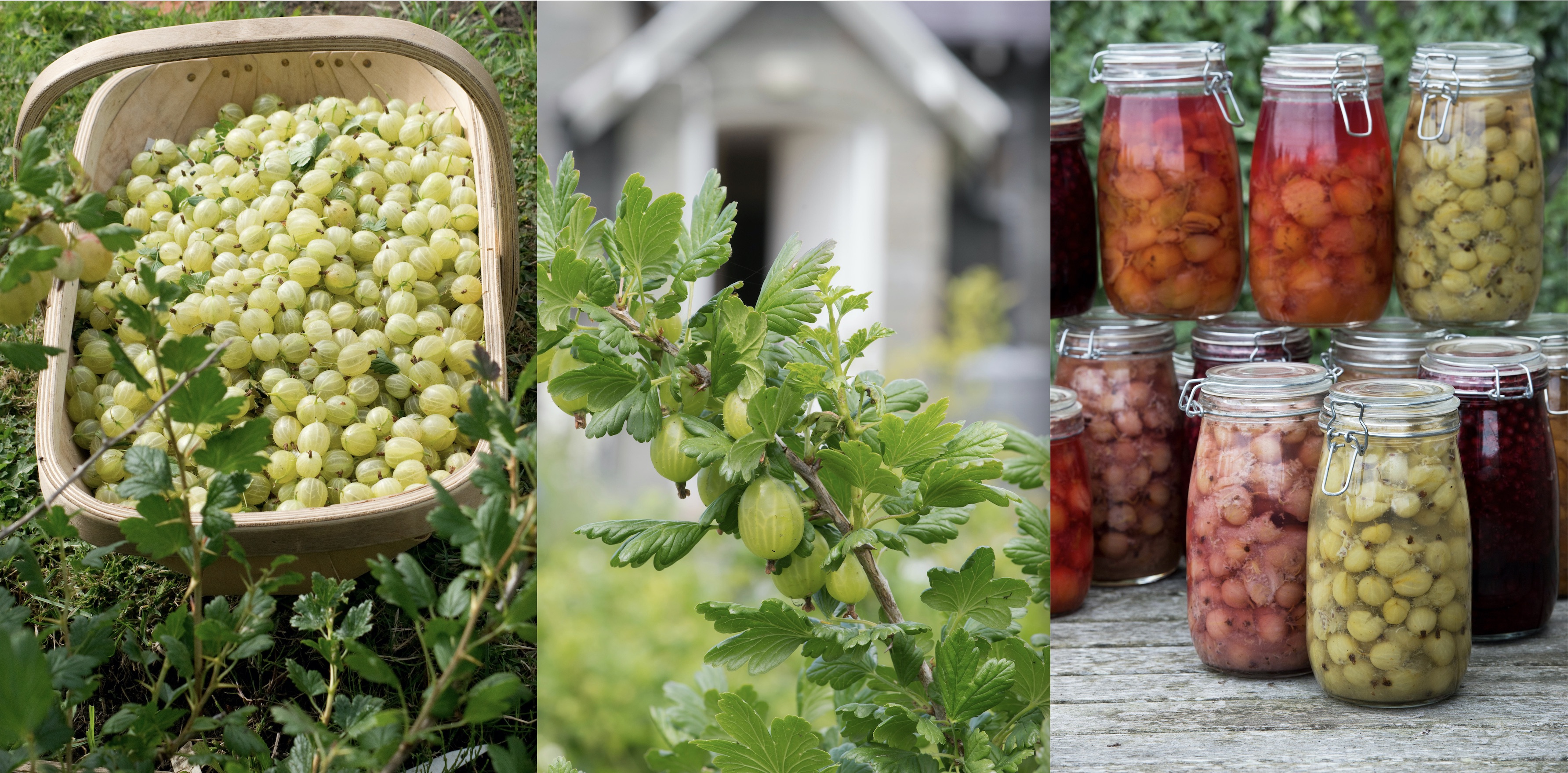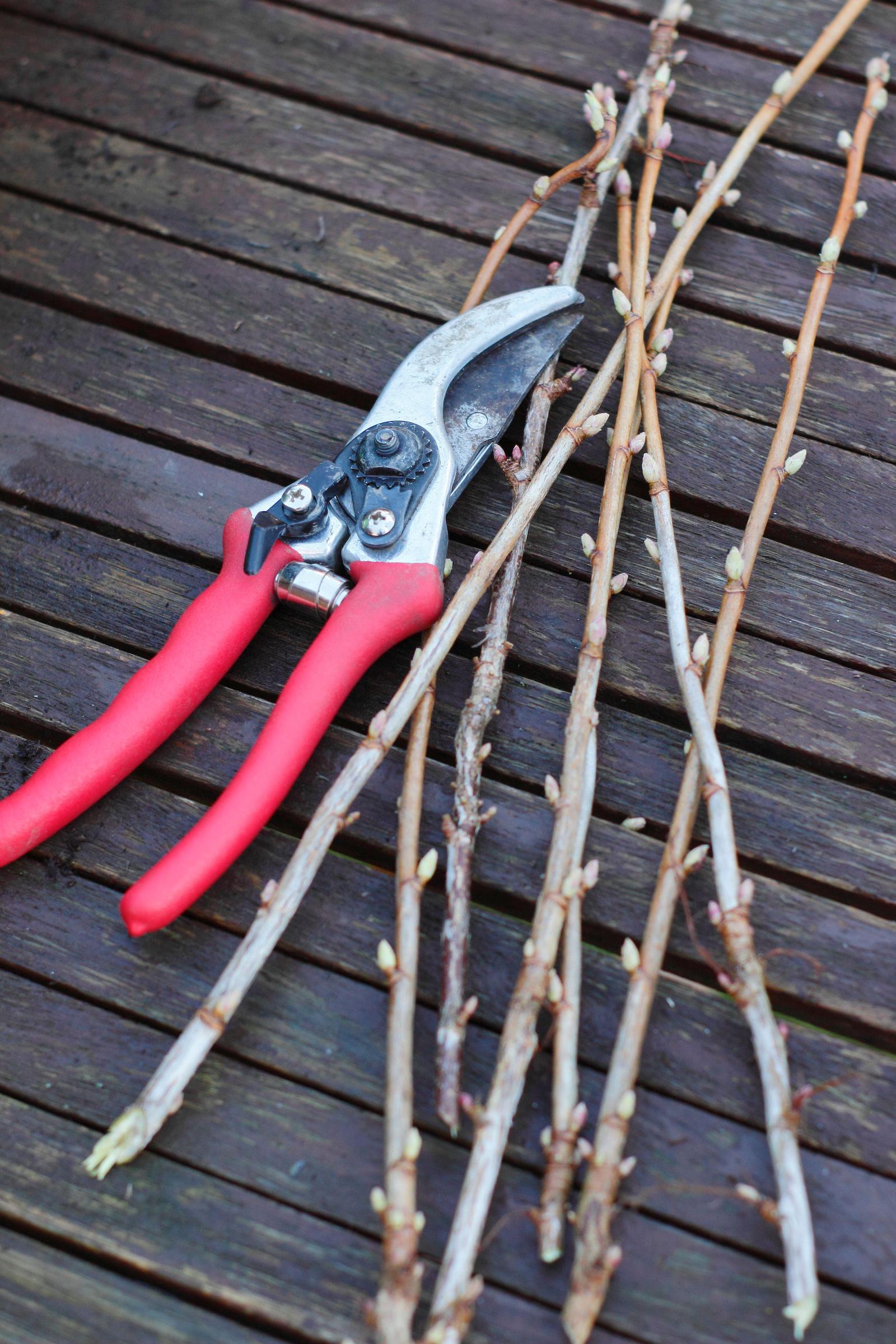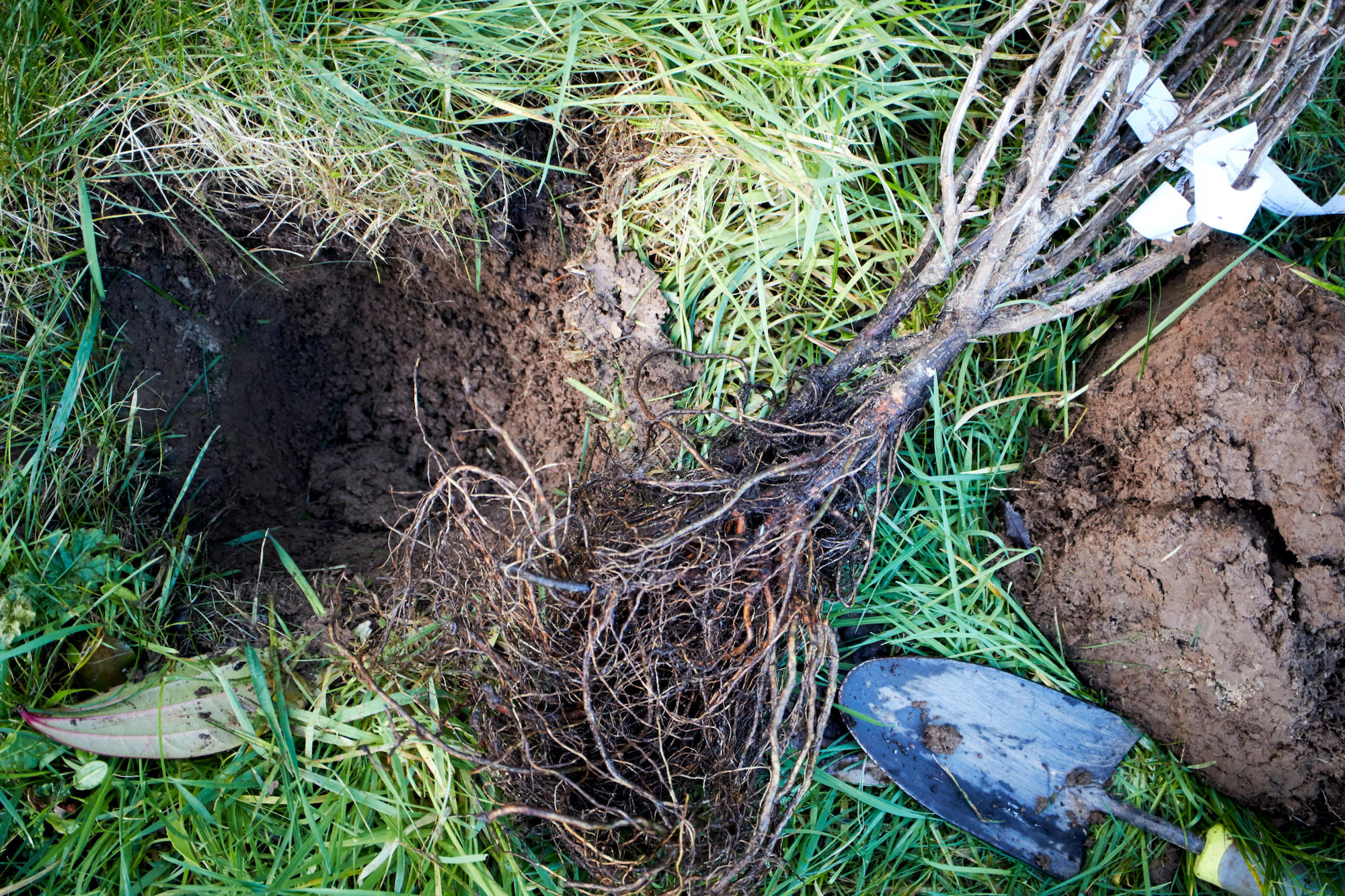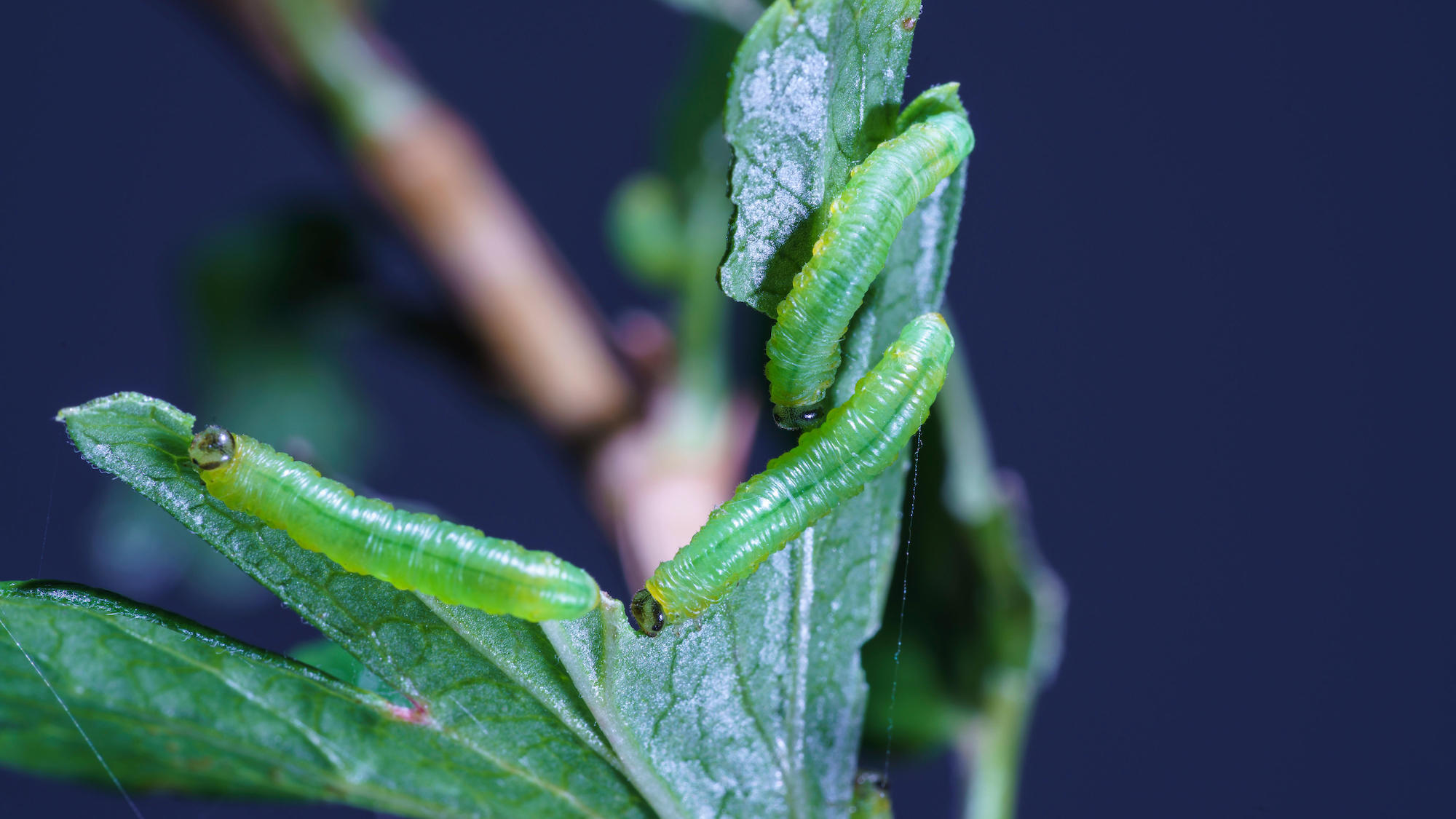How to grow gooseberries – an expert guide
Once banned in the US, this sweet-sour fruit is now growing strong in gardens, smallholdings and hobby farms. Here’s how to grow gooseberries at home


It’s definitely worth learning how to grow gooseberries and adding them to your fruit patch. They’ll give you delicious berries from June to August but also freeze beautifully, so you can enjoy their sweet but tart flavor all year round.
Looking like large bubble tea balls, with veins running down their globe shape, gooseberries are one of the most easy-to-grow fruits to have in your garden. They once had a bad reputation as a host to a tree-felling pest, and their cultivation is still banned in some States. But the Federal restrictions on growing gooseberries were lifted in 1966 and now they are welcomed in gardens and homesteads in most regions of the US.
How to grow gooseberries
Gooseberries easily earn their place among the best kitchen garden ideas, such as asparagus, broccoli, eggplant and cucumbers. They are hardy plants and can be positioned in most spots. They can also be trained against a wall in order to take up less space in a small plot.
Planted in the cold months, and with a need for only basic feeding and watering, they will produce bountiful fruits once summertime comes.
‘There was a time when no self-respecting gardener would have been without a few gooseberry bushes in their plot,’ says Ed Bollom, Head Gardener at Gordon Castle, Scotland, which offers online how to grow vegetables and how to grow fruit courses.
‘Don’t be put off by the small, sour fruit on offer from the store; homegrown gooseberries can be the size of a chicken egg and as sweet as honey. We grow eight different varieties at Gordon Castle, ranging in colour from the traditional emerald green ‘Woodpecker’, golden yellow ‘Early Sulphur’, to the ruby red ‘Lancashire Lad’, all of which make a fine dessert.
Buy your gooseberry plants

You can grow gooseberry bushes from bare-root plants or from established bushes. ‘For best value for money, buy bare rooted plants from a nursery in late winter or early spring,’ suggests Ed Bollom.
Design expertise in your inbox – from inspiring decorating ideas and beautiful celebrity homes to practical gardening advice and shopping round-ups.
For a fast track to fruiting, buy a developed gooseberry bush and plant in the vegetable garden or a container, ready to fruit as soon as the weather warms up.
You can also grow a new gooseberry plant from a cutting taken from an existing plant, but it will take longer for the plant to develop roots and be ready to plant outside.
How to take gooseberry cuttings

Take cuttings from a gooseberry plant that’s at least one year old. You’ll need to take them during the dormant season, which lasts from late fall through late winter – although, ideally, you will take the cuttings either just after the leaves have dropped in the fall, or just before they begin to bud in the spring.
The cuttings should come from the plant’s hardwood. Choose healthy, strong shoots at least a year old. Clip off and discard the soft tip, then cut the remaining hardwood shoot into sections about six inches long.
Slice the top of the cutting at an angle, just above a bud. The bottom cut should be just below a bud, straight across the shoot.
Fill plant pots with a mix of compost and grit. Dip the base of each cutting in rooting powder, then put the cutting into the pot, planting it to half its depth. Firm the compost around the cutting and water.
Keep the cuttings in a cold frame, unheated greenhouse or garage until the following fall, watering the soil pot occasionally to keep the compost moist.
By fall, the cuttings will have developed roots and you can plant your new gooseberry bushes in a permanent spot in the garden.
When to plant gooseberry bushes

Container-grown gooseberry bushes can be positioned outside at almost any time of year, as they are already well established.
‘You can plant bare rooted plants during the winter and early spring, as long as the soil isn’t frozen,’ says Ed Bollom. ‘When you get your plants, either put them in the ground straightaway, or else soak the roots until you’re ready to plant to prevent them from drying out.’
Where to position gooseberry plants

Gooseberries prefer to grow in a sunny position, but will fare well in all but the shadiest parts of the garden.
‘I recommend growing your gooseberries in a sunny spot, but believe it or not, your gooseberries will grow perfectly in more shaded areas as well – they’re perfect for north-facing gardens,’ explains Lucie Bradley of garden product company, Two Wests. ‘Additionally, I usually recommend sheltering your growing fruits, but gooseberries can handle exposed positions.’
You need a good, moist, but well-drained soil that doesn’t become waterlogged in the rainy, wintery seasons. It would be a gooseberry growing mistake to plant them in area of poor drainage. ‘It will also benefit your gooseberries to add organic matter or soil improver to your plants,’ says Lucie. ‘If your soil is more clay based, this will help with draining the water away. If your soil is more sand based, this will retain some all-important moisture.’
Gooseberry bushes can be planted against a wall or fence and trained against them, reducing the amount of space they take up in a bed or border.
‘If you’re feeling adventurous, gooseberries can be pruned and trained into all sorts of interesting shapes or even grown up a wall,’ says Ed Bollom. ‘In the Walled Garden at Gordon Castle we have trained gooseberry bushes into T-shaped step-overs to make a small fence around the soft-fruit garden that is as beautiful as it is fruitful.
How to plant gooseberry bushes

Plant your gooseberry bushes around 5 foot apart, in a hole that’s around 1 foot deep and 2.5 feet wide.
‘Gooseberries like deep fertile soil so be sure to add plenty of organic matter to your plot prior to planting, especially if you are on a very sandy plot,’ suggests Ed Bollom. ‘Well-rotted horse or farmyard manure is great for improving your soil but home-made garden compost is the best option and reduces the chances of bringing in weeds from elsewhere.
‘Dig a hole at least twice the size of the root ball and gently spread the roots out to fill the space. Back-fill the hole, being careful not to plant too deeply – the level of the soil should be just above the point where the roots join the stem.
‘Firm the soil down well and water the plants.’
If you are planting your gooseberry bushes in a container, you will need a pot around 12-15 inches in diameter, filled with potting compost.
Caring for gooseberry bushes

Food and water are what gooseberries need to thrive.
‘During dry spells of weather, you should be watering your plant regularly, particularly within the first year of growing. If the soil is looking dry, and your fruits are beginning to swell, add some more water,’ says Lucie Bradley. This is particularly true for container plants, which can easily dry out in hot weather.
A light top-dressing of fertilizer in late spring should keep your plants growing strongly. ‘Give your plants a good feed in the early spring, and top up the mulch if necessary to help retain moisture,’ Lucie suggests.
Protect your plants with horticultural fleece at flowering time if there is the threat of a late frost.
The better your crop, the more support your plants may need. ‘Gooseberries can be top heavy so you may need to tie them to a stout stake or bamboo cane to prevent wind-rock,’ explains Ed Bollom. ‘During the winter, cut back long whippy shoots to one-third of their original length to prevent them splitting out under the weight of a heavy crop.’
Pests and problems

Aphids, gooseberry sawfly, woolly vine and currant scale can all affect gooseberry plants. ‘Sawfly caterpillars love to munch on gooseberry plants, eating away all the greenery and just leaving behind the skeleton of the leaves, so check your plants regularly and remove the caterpillars on sight,’ advises Ed Bollom.
Birds may also damage the buds in winter and feed on the crop in summer. ‘I advise covering your plant with some good netting to protect from weather damage, birds, and other wildlife,’ says Lucie Bradley.
Finally, mildew is another issue to look out for. ‘American mildew can affect old-fashioned gooseberries but most modern varieties are much more resistant’ explains Ed Bollom. ‘Try pruning to promote good air circulation if you find mildew to be a problem.’ Prune the bush into a goblet shape to prevent mildew, by cutting out branches from the centre of the bush, or those growing laterally towards the middle of the bush.
Gooseberries were once banned across the United States, along with certain species of currants, because the bushes can act as an intermediary host for white pine blister rust, which can kill white pine trees. Although the nationwide restrictions on gooseberries have been lifted, some states with a strong lumber industry and reliance on white pine, such as Maine, Massachusetts, Jersey, North Carolina and Delaware, still restrict the growth of gooseberries in certain areas. Check with your local Department of Food and Agriculture before buying any plants if you are unsure.
Harvesting gooseberries

Gooseberries can be harvesting from June through August. You can expect a yield of around 11lb from each bush. The best fruit grows from wood that's no more than three years' old, so prune back each year for the most abundant crop.
Early on, when the berries are still firm, unripe and tart, pick every other fruit and use for making sauces, tarts and pies.
Later on, when the gooseberries are sweet and tender, pick carefully to avoid them boosting, and enjoy them uncooked. If you have a glut of gooseberries, freeze or preserve the excess fruit to enjoy once the season is over.
Are gooseberries easy to grow?
Yes, gooseberry bushes are hardy and need only the basics of plant care, including water and feeding, to thrive. They do best in a sunny position but can grow well in most aspects, so are a good crop for awkward spots in the garden.
How long does it take a gooseberry bush to bear fruit?
Your gooseberry bush should produce fruit the season after it is planted, increasing its yield until it is four years' old. The bushes will produce fruit for 20 years. For best results, prune each year at the end of the season, as the most fruit is produced on branches no more than three years' old.
Andrea has been immersed in the world of homes, interiors and lifestyle since her first job in journalism, on Ideal Home. She went from women's magazine Options to Frank. From there it was on to the launch of Red magazine, where she stayed for 10 years and became Assistant Editor. She then shifted into freelancing, and spent 14 years writing for everyone from The Telegraph to The Sunday Times, Livingetc, Stylist and Woman & Home. She was then offered the job as Editor on Country Homes & Interiors, and now combines that role with writing for sister title homesandgardens.com.
